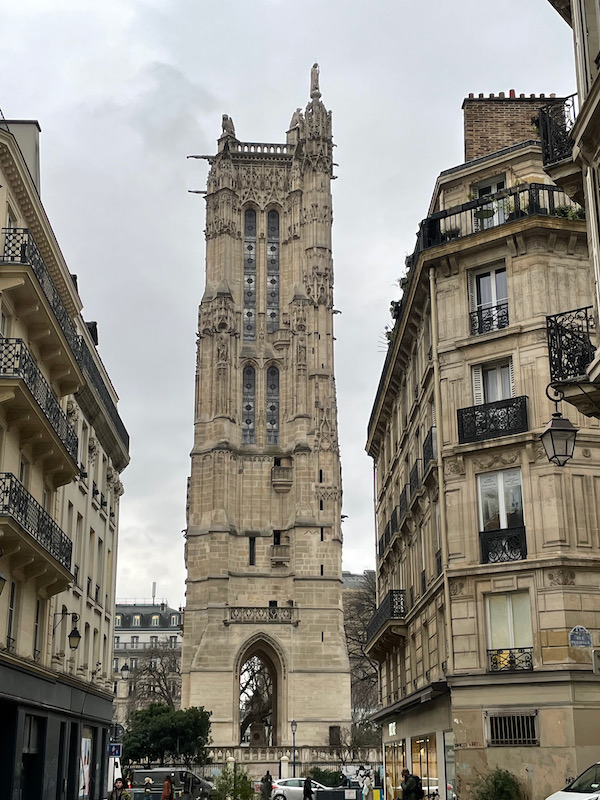Our Blog - Paris 2022 Day 3
Our 3rd day in Paris started at the Luxembourg Gardens for a nice stroll. We grabbed a few pictures, including one in front of the fontaine Médicis. It was built in about 1630 by Marie de Medici, the widow of King Henry IV of France and regent of King Louis XIII of France. It was moved to its present location and extensively rebuilt in 1864-66. In the 17th century, there was a huge Italian Mannerist-style movement in France. Marie de Medici, as widow of Henry IV and mother and regent of King Louis XIII of France, began construction of her own palace, which she called the Palais des Medicis, between 1623 and 1630. The new palace was modeled after the Palazzo Pitti in her native Florence, and the gardens around the palace were modeled after those of the Boboli Gardens in Florence. The Palace is now the home of the French Senate.
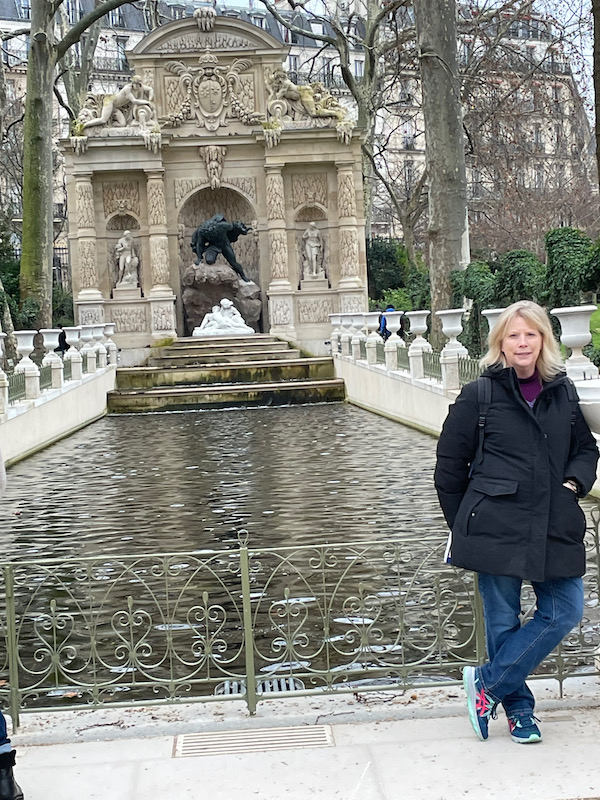


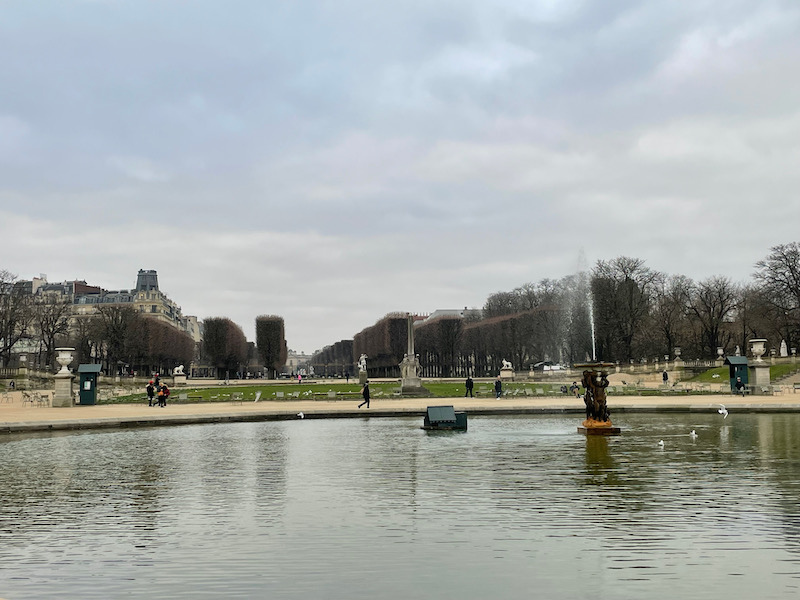
We headed over to a boulangerie to pick up a snack and I was amazed at the desserts in the window. We didn't buy any, but I was thinking about how elaborately decorated the desserts are normally done here.
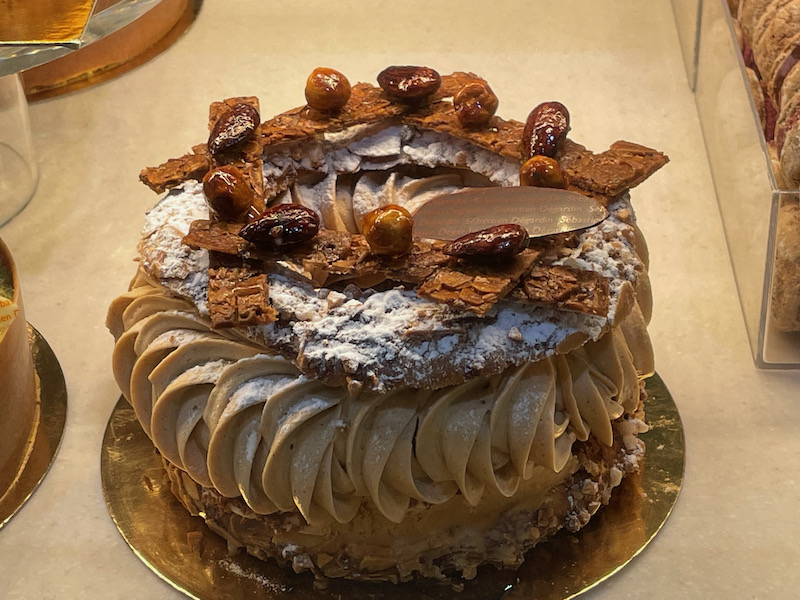
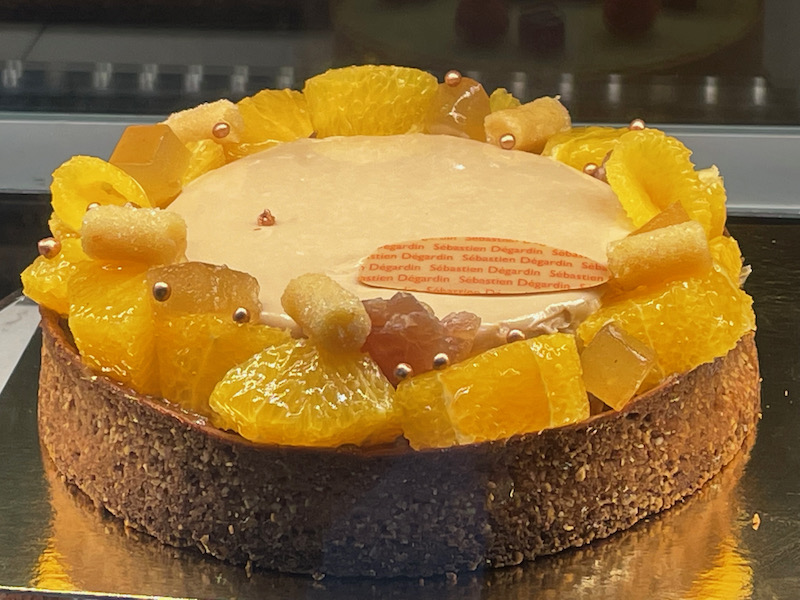
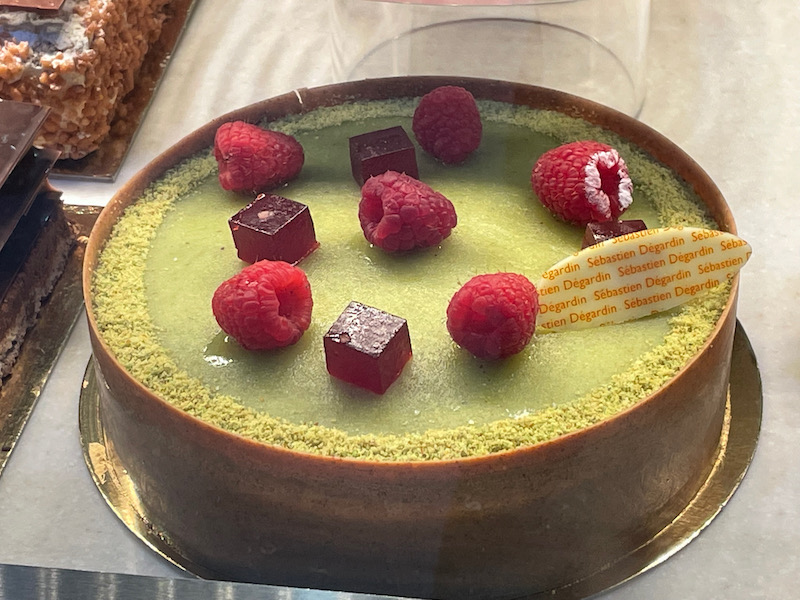
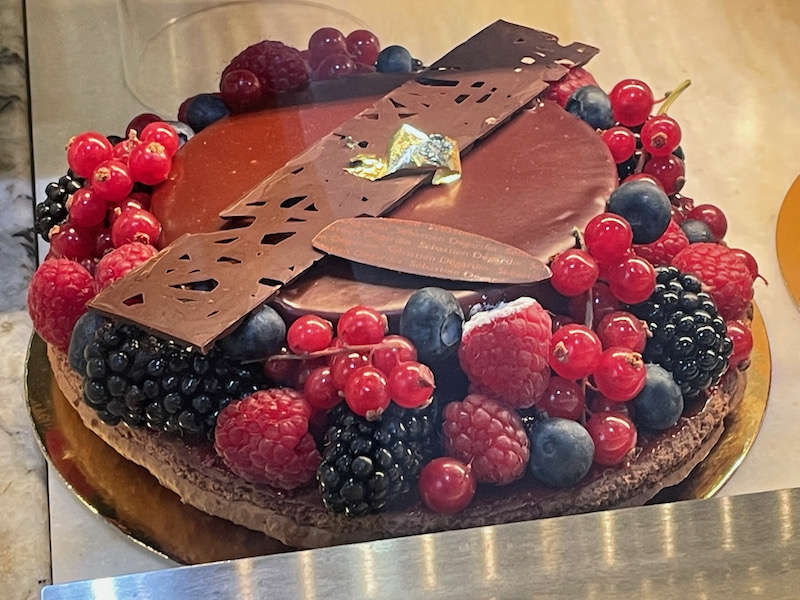
One of the "off the beaten track" things to see in Paris is the sundial of Salvador Dali. It was installed in 1966 on the side of a building on Rue Saint-Jacques. One theory on why he created this sundial here, along with the design, is that this road was the original main route for Pilgrims on their was from Paris to Santiago de Compostela. The face of the dial is in the shape of a scallop shell, which pilgrims would wear to show they were taking the pilgrimage. Above the brilliant blue eyes, you can see what looks like heat rising from the eyebrows, indicating that they were embarking on a long journey.
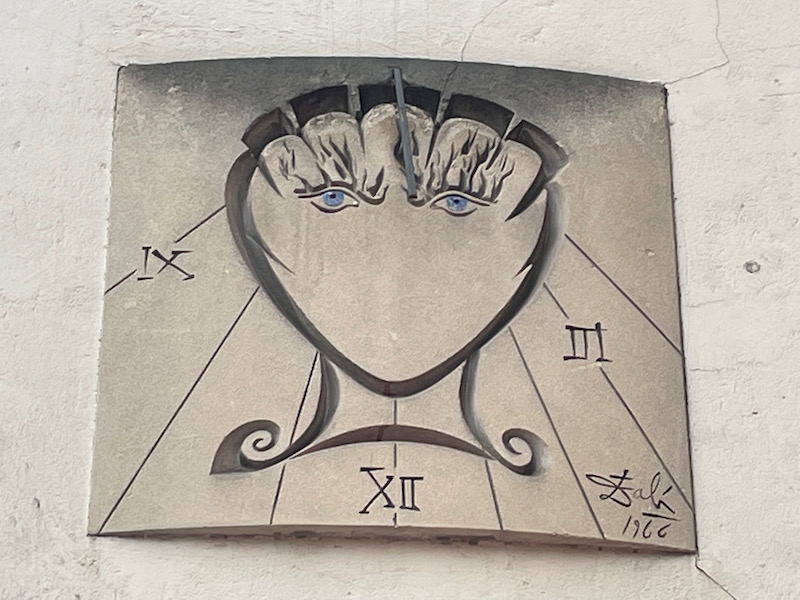
We couldn't make a trip to Paris without a visit to Notre Dame Cathedral. We went there often when we lived in Paris, even doing a New Years Eve midnight mass at the cathedral. We were shocked and extremely sad/upset when we watched the spire burning on TV in April 2019. The stabilization of the building was completed in November 2020 and reconstruction began last year. The goal is to have it done by the opening of the 2024 Olympics in Paris. Obviously, we couldn't go inside but took a few pictures outside, including this statue entitled "Charlemagne et ses Leudes".
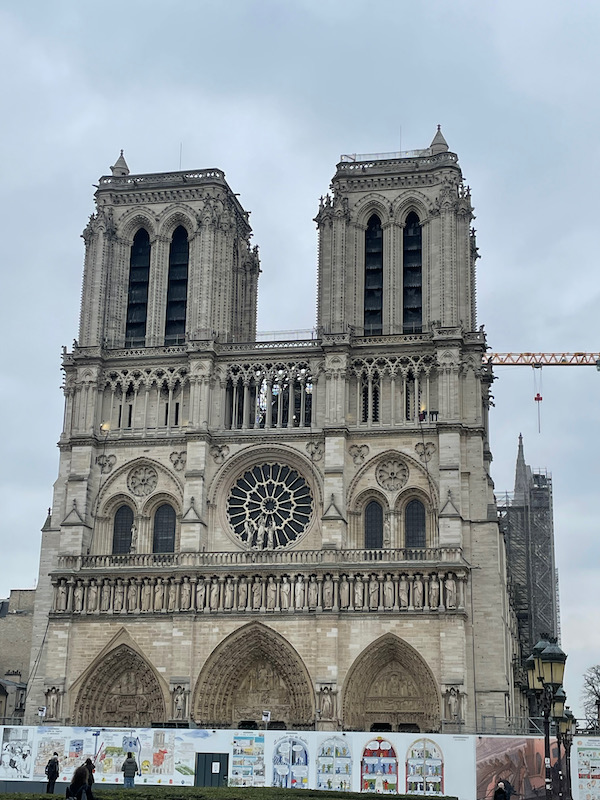
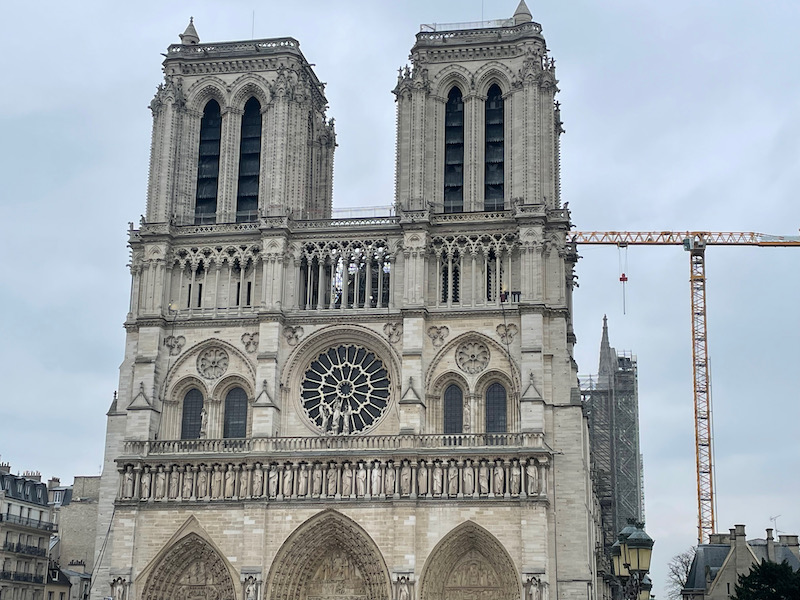

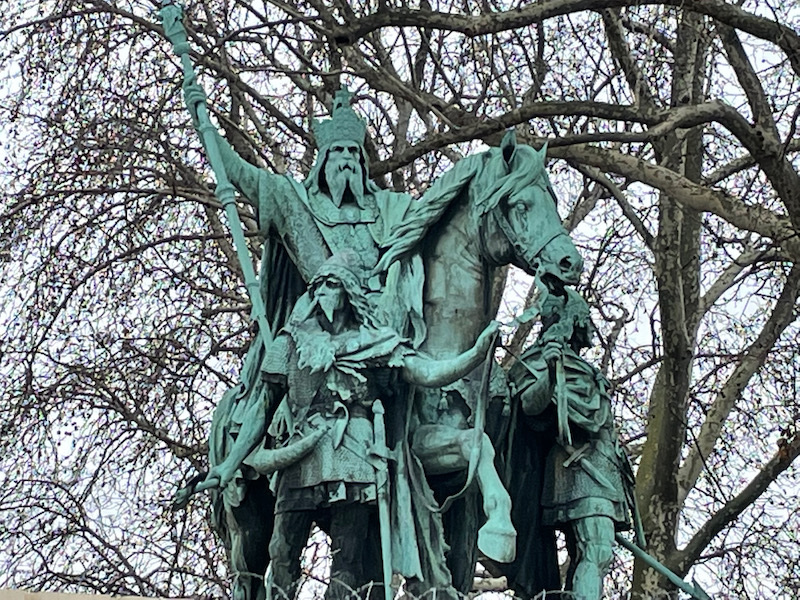
In one of the pictures above, you can see the fencing around the church. All along it, there are pictures and descriptions of various things, including a ton of information on the clean-up and restoration work. The fire occurred during a renovation and there was a bunch of scaffolding in the church, which caught fire. The first task of the restoration was the removal of 250–300 tonnes of melted metal tubes (the remains of the scaffolding). This stage took 3 months and used a 275-feet high crane. Then, wooden support beams were added to stabilize the flying buttresses and other structures, which you will be able to see in the pictures. I took a set of pictures of the pictures and information on the panels. This first one shows debris from the vault and the spire, laying on the floor of the transept crossing and the 2nd shows wood and stone debris in the nave
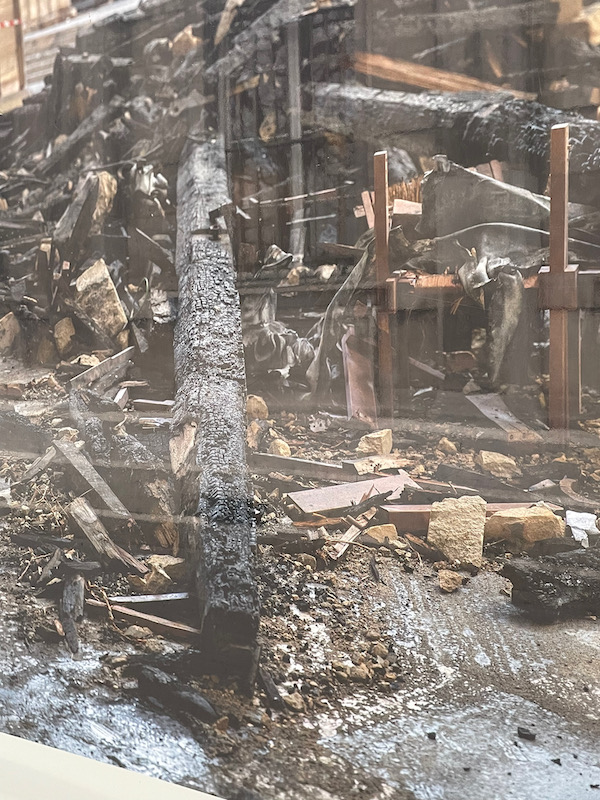
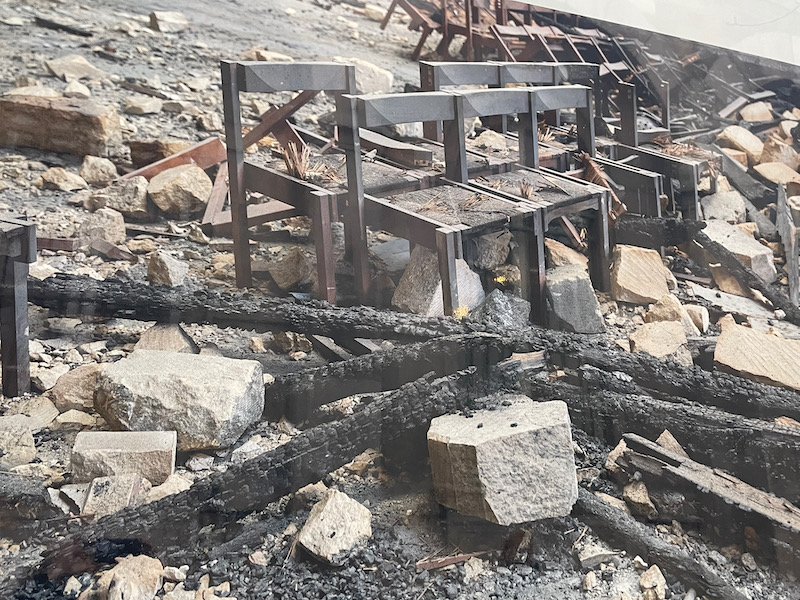
Here you can see the wooden supports under the flying buttresses. The 3rd is a picture of the picture showing the work of hoisting a support frame into place by a crane.
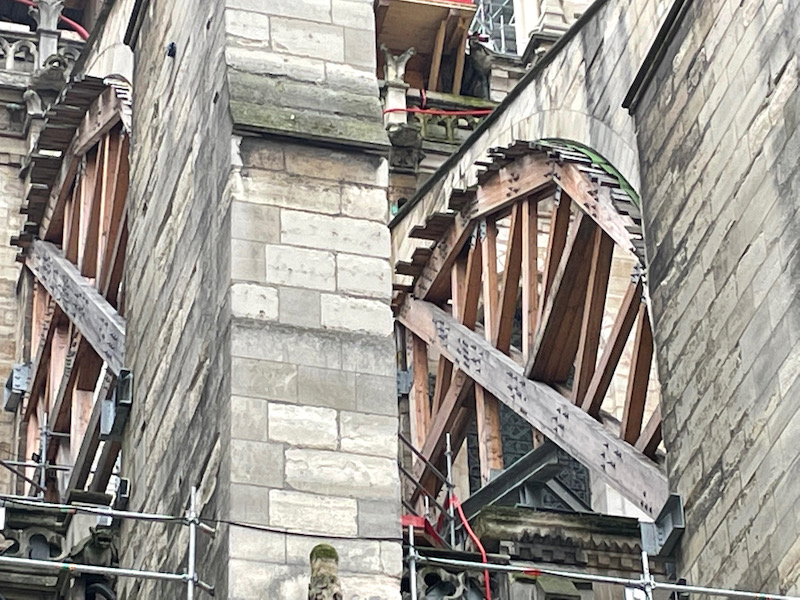
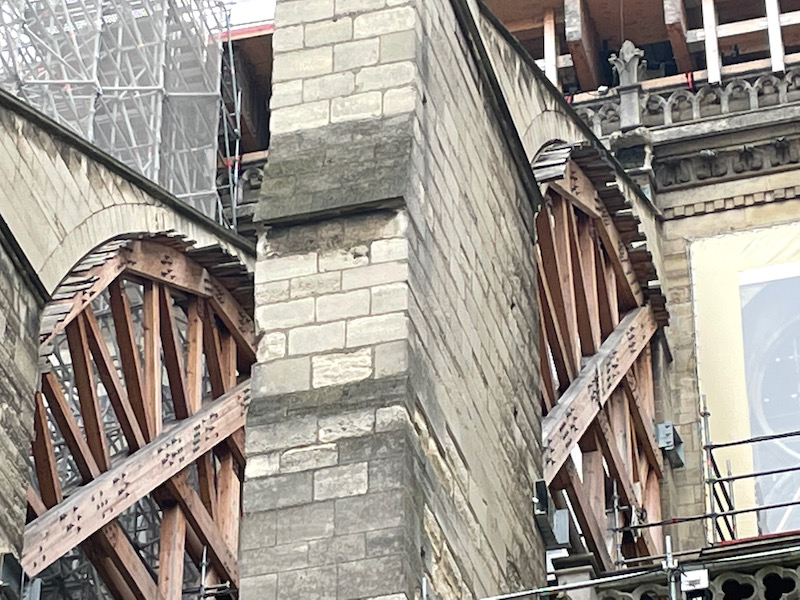
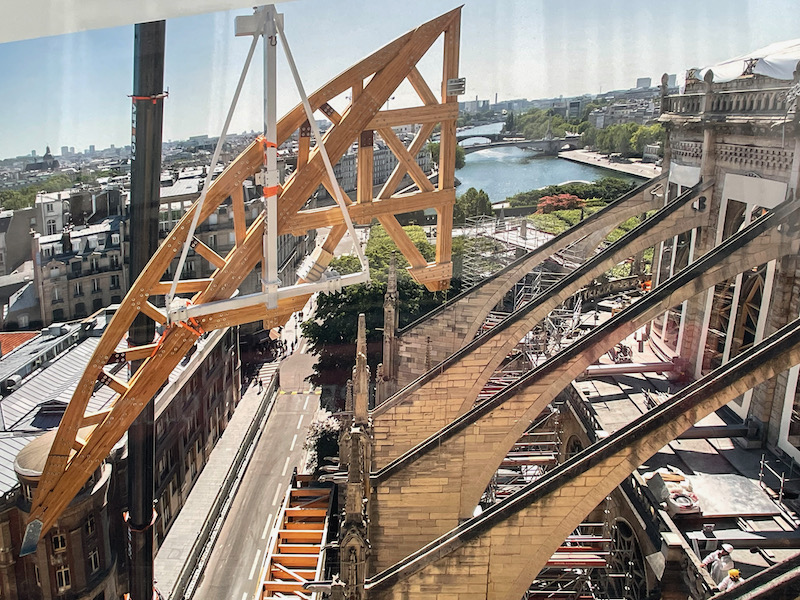
As you can imagine, the stained glass windows are in need of a cleaning after the fire! France has the world's largest surface are of stained glass and, therefore, a large number of master glassmakers who understand how to restore these very fragile masterpieces. Many of the windows have been taken out to be studied, cleaned, and restored prior to putting them back in. You can see how the window area has been covered by rectangles of fabric and clear plastic. The windows themselves have been removed and these panels protect the stone framework, keep out the elements, but still allow sunlight to come through.
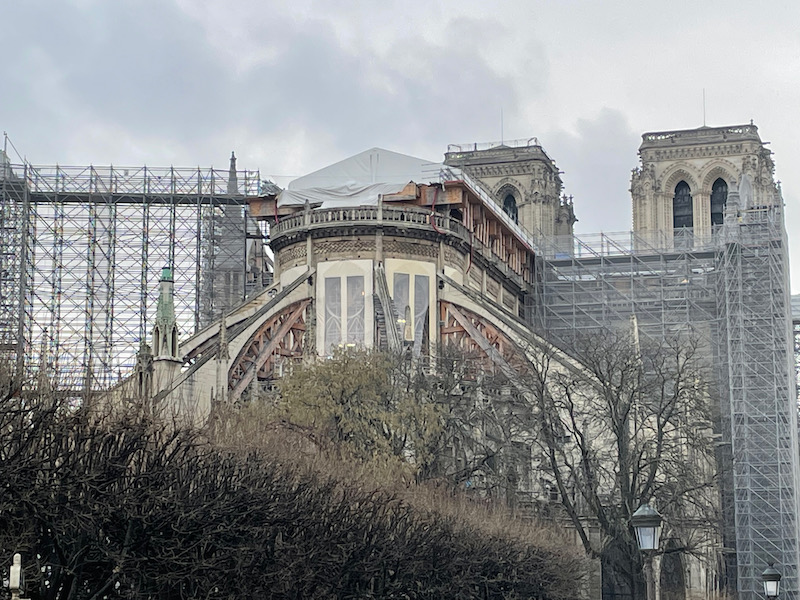
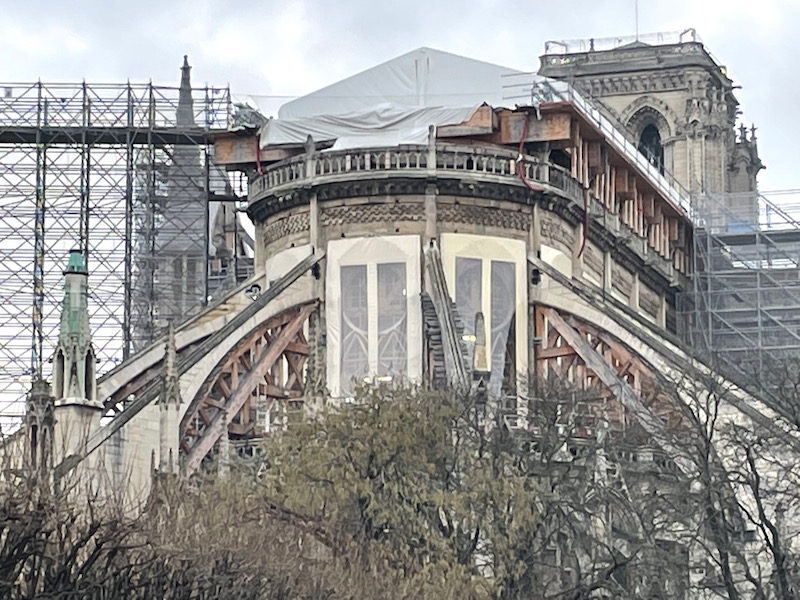
We had lunch across the street from the National Archives, which is housed in two grand hôtel particuliers (mansions). The main entry is the gate into the Hôtel de Soubise. The original mansion here was built in 1371 and its fortified gate and corbelled turrets topped with round watchtowers is the only remaining visible vestige of private architecture from the 14th century in Paris. A new facade and the colonnade of the courtyard were then built between 1705 to 1709. After the two mansions were acquired by the State, Napoleon I assigned the Hôtel de Soubise to house the Archives and the neighboring Hôtel de Rohan to house the Printing Office.
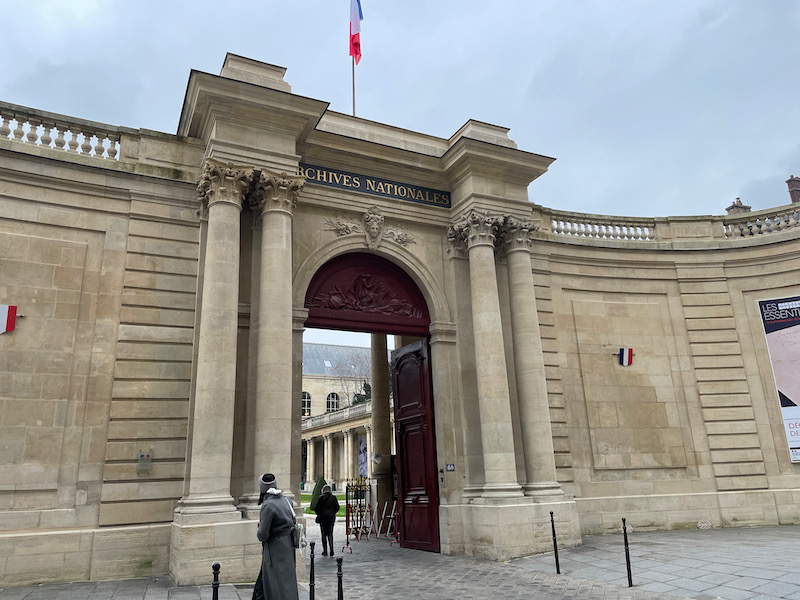
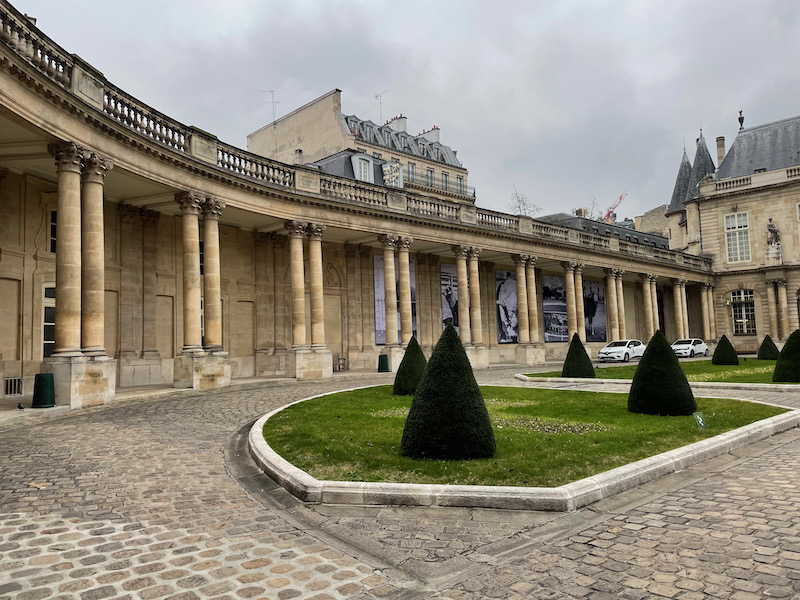
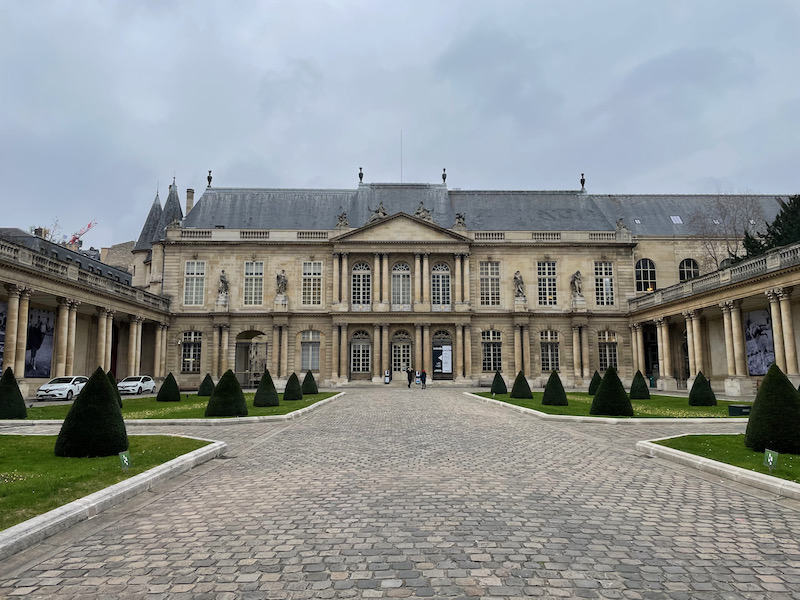
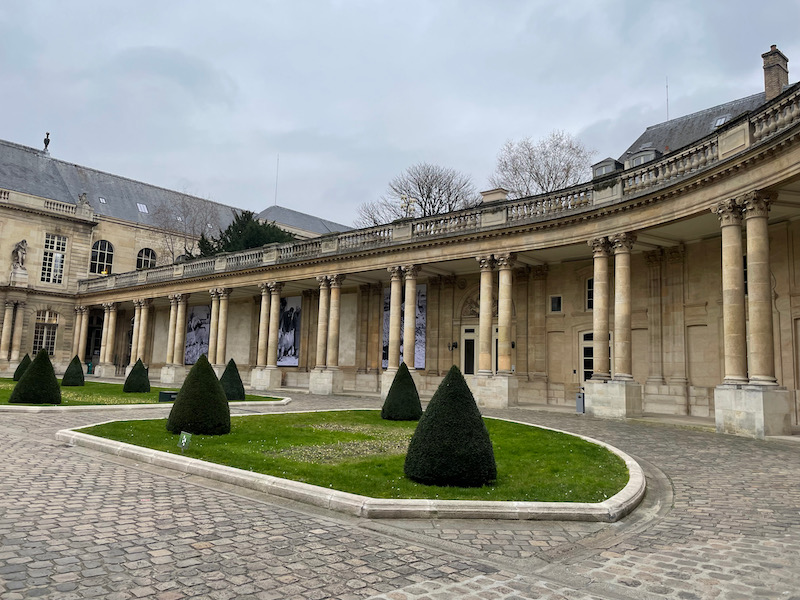
Another couple covered passages today, the first being the Passage du Bourg l'Abbé. It was built in 1828 and the Eastern entrance are framed by two caryatids, sculpted by Aimé Millet, that are allegories of Commerce and Industry. Not as fancy as some, it does have nice wooden signage for the stores.
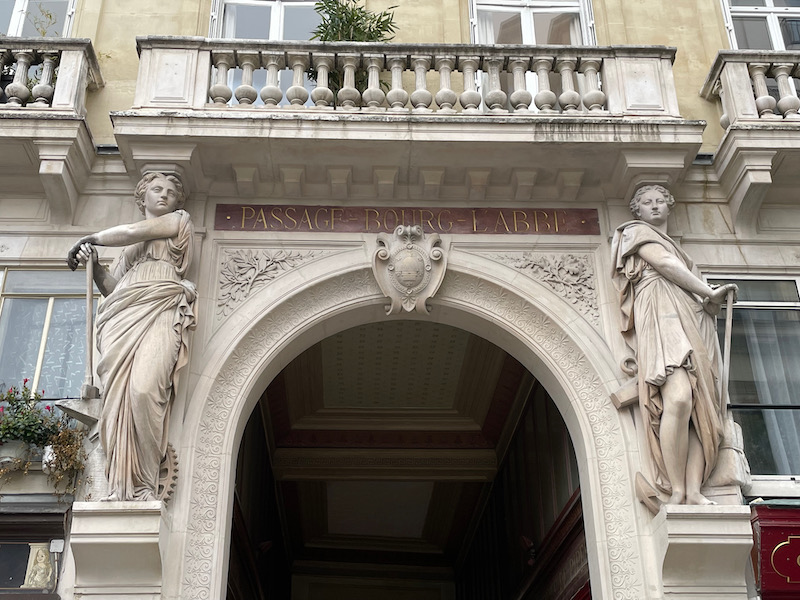




Nearby is the Passage du Grand Cerf, which was opened in 1825. The current architecture of the passage dates it back to 1845 rather than 1825, when the passage was covered by a large glass roof. A little trivia: since 2016, about 20 merchants in the passage have agreed to accepted payments in bitcoin.

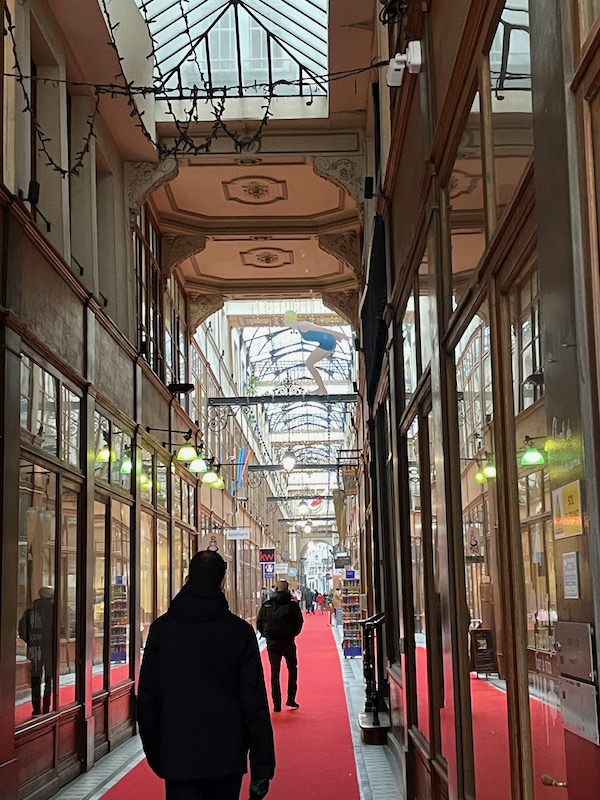
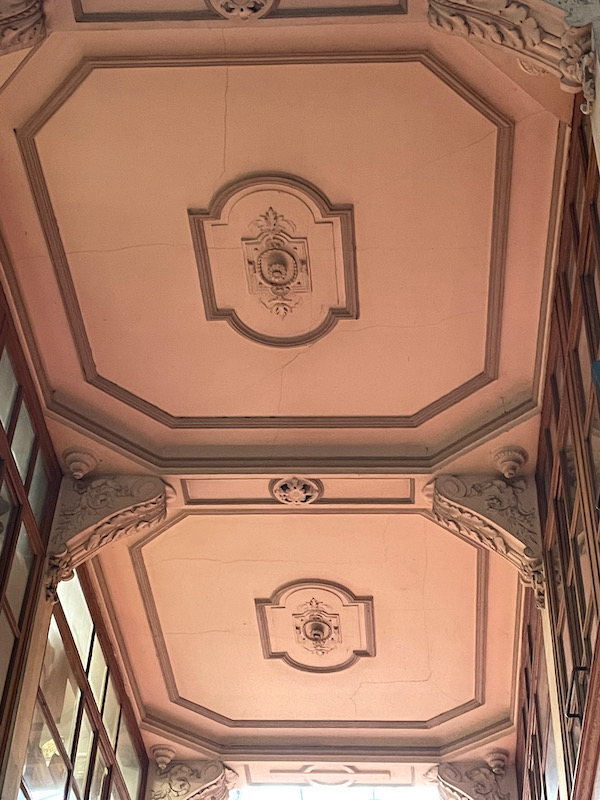
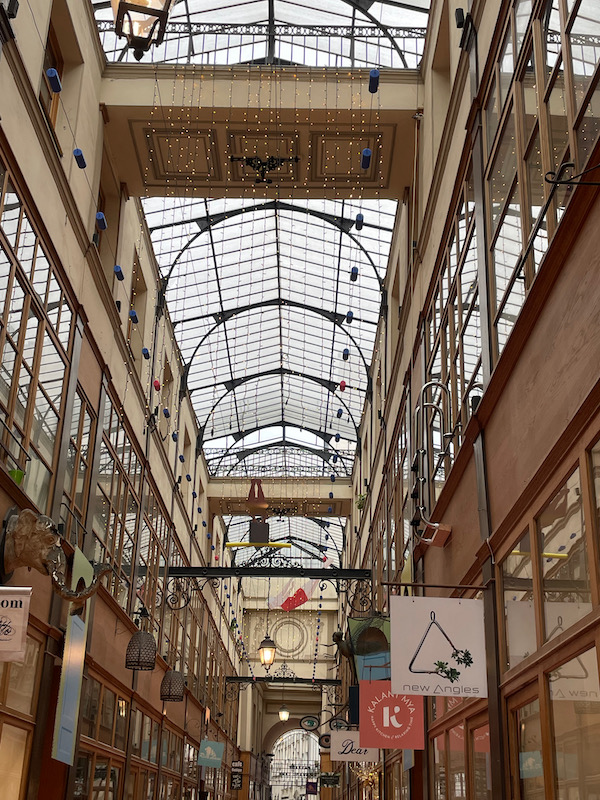
The Eglise Sainte-Élisabeth-de-Hongrie is in the Temple district. Construction began in 1628 and the first stone was laid by Queen Marie de Medici. Originally, the church was the monastery chapel of a set of Franciscan nuns. In 1815, a mass for Louis XVI was celebrated here at the request of the knights of the Sovereign Order of Malta. The exterior of the church has a very classical façade with Jesuit inspiration. A Pieta is on the tympanum and the 4 statues date from the Second Empire showing Saint Louis and Saint Eugenie (patron saint of the wife of Napoleon III), Saint Elizabeth, and Saint Francis of Assisi.
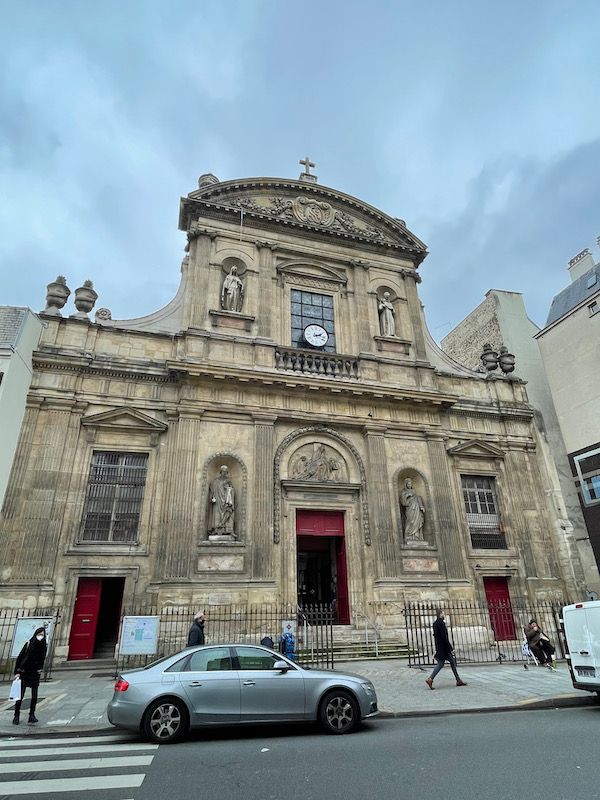
There are a few interesting things here, like the fact that the pillars that line the nave are covered on the bottom with wood panels. There are 4 frescoes from the middle of the 19th century (I only show 2 of them) and the wood carving shows "the serpent of Airain".
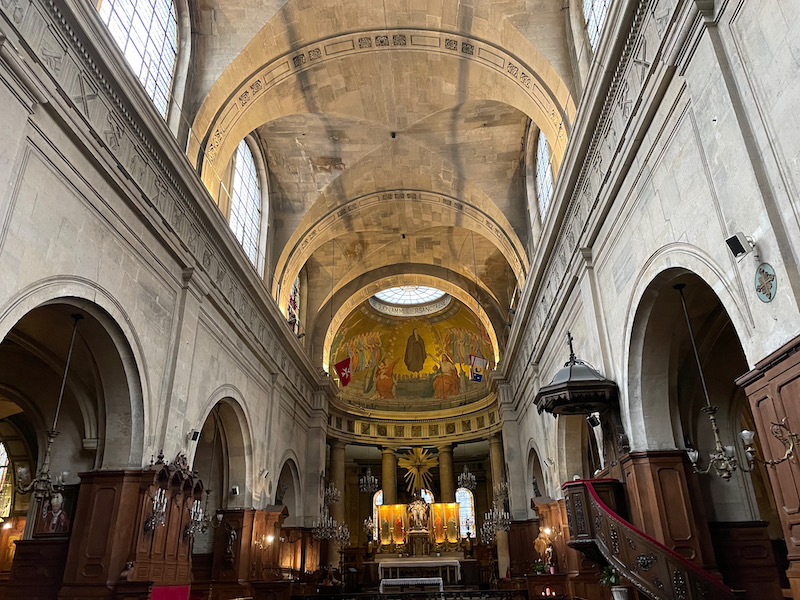



A half-dome is decorated with a fresco representing “The Glorification of Saint Elizabeth of Hungary welcomed by the angels in heaven” by Jean Alaux (1786-1864). Here, Elizabeth is shown in a Franciscan habit. She is greeted by the three theological virtues and by the Archangels Saint Michael and Saint Gabriel. Below are 4 paintings of angels in adoration.
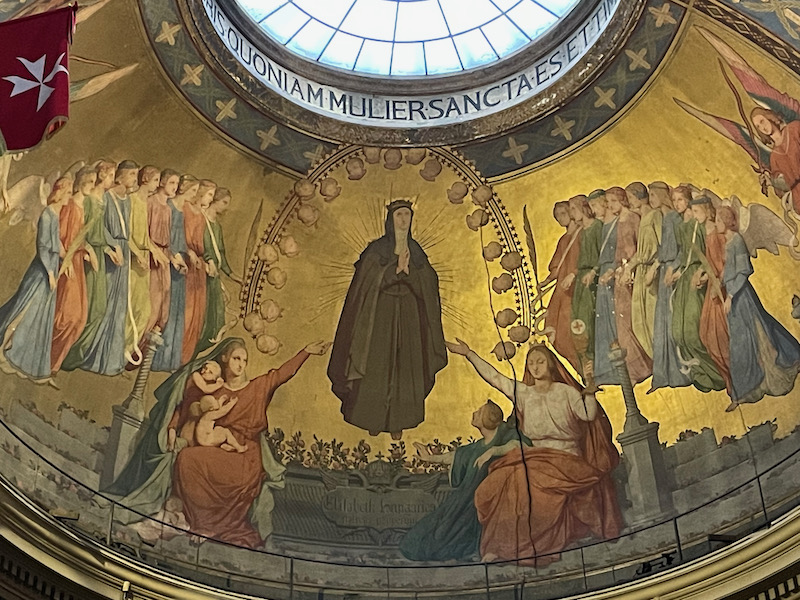
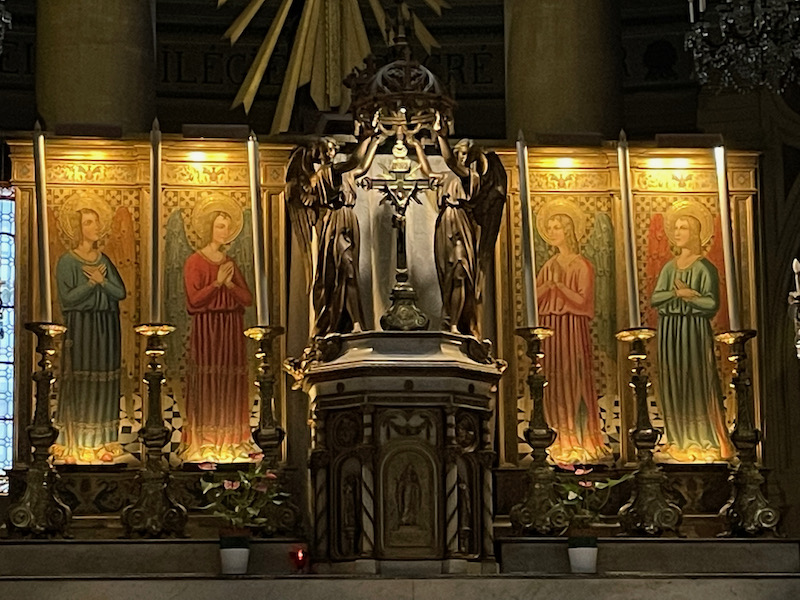
The grand organ was inaugurated in 1853 and the stained glass windows are from the 1820s.
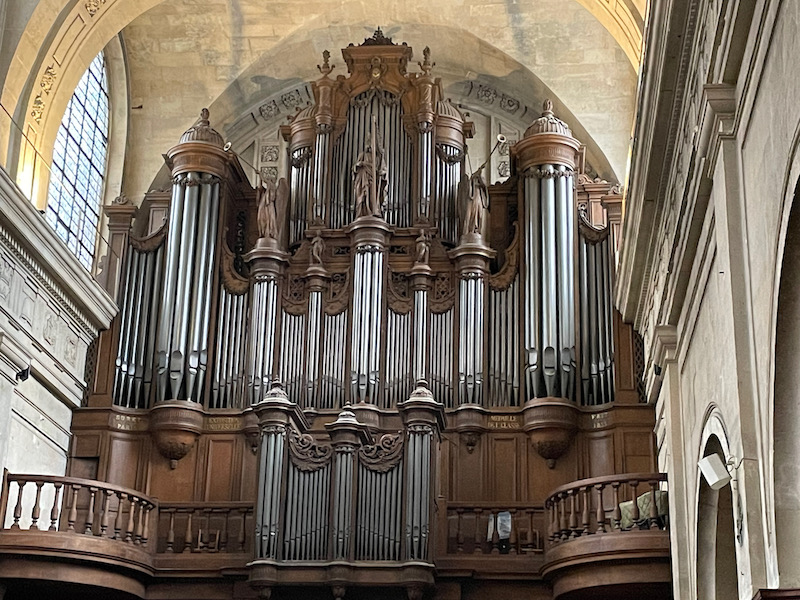

Le Carreau du Temple was built in 1863 as a covered market for this arrondissement. The original 1811 wooden market was replaced by the current brick-and-glass structure. It was closed and was scheduled to be torn down by it was saved and turned into an event space.
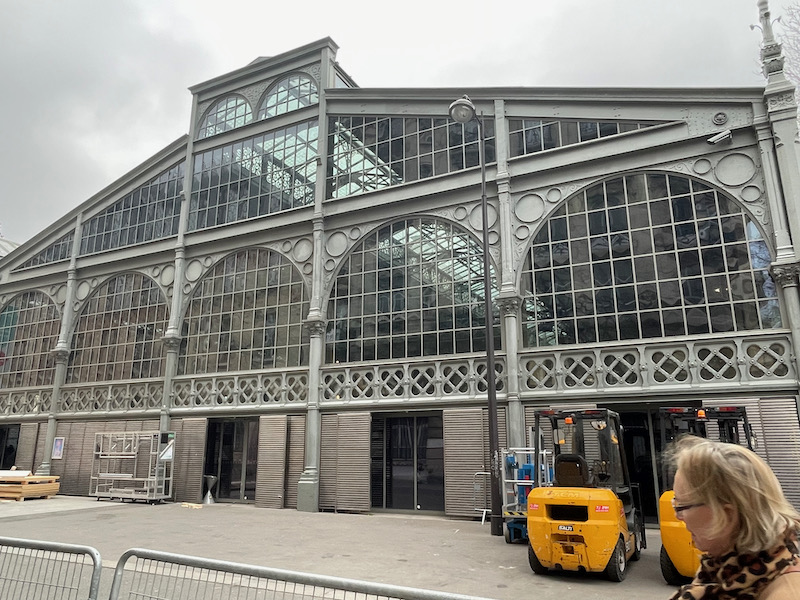

Not easy to make out, but there are metal rectangles on the ground that outline the old Keep of the Knights Templar. The medieval fortress of the Knights Templar was built in the 13th century. The tower was used as a prison for King Louis XVI for 5 months before being guillotined, Marie Antoinette and Madame Elisabeth before being moved to the Conciergerie and then guillotined, Louis XVII until his death from tuberculosis, and Princess Marie-Therese before being sent into exile after over 3 years here. Needless to say, it was a popular pilgrimage site for royalists so Napoleon ordered its demolition which was completed in 1860 under Napoleon III.
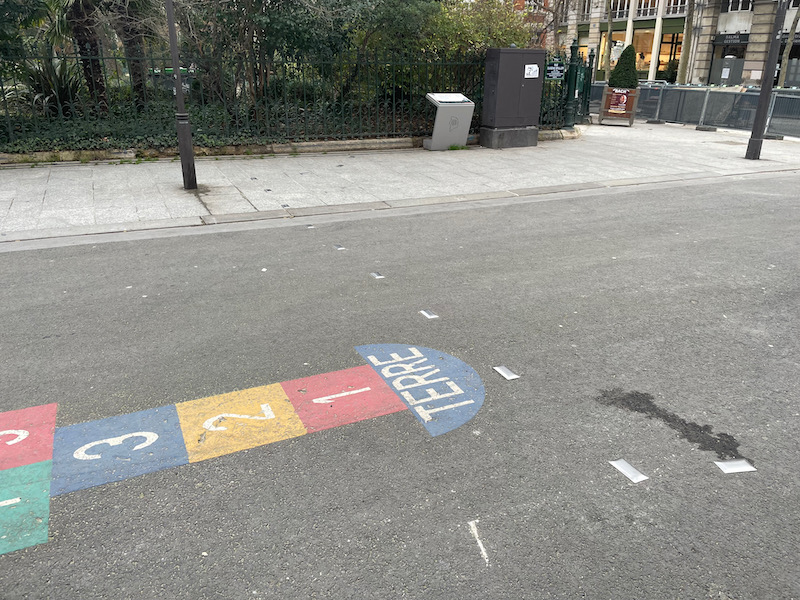
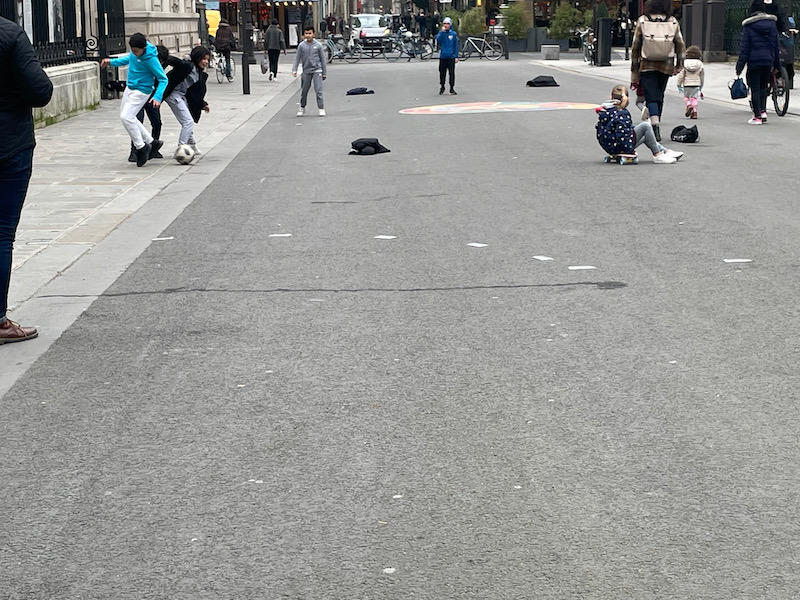
Hidden back on rue du Vertbois are the remnants of the former enclosure of the Saint-Martin-des-Champs priory, which dates from the 13th century.
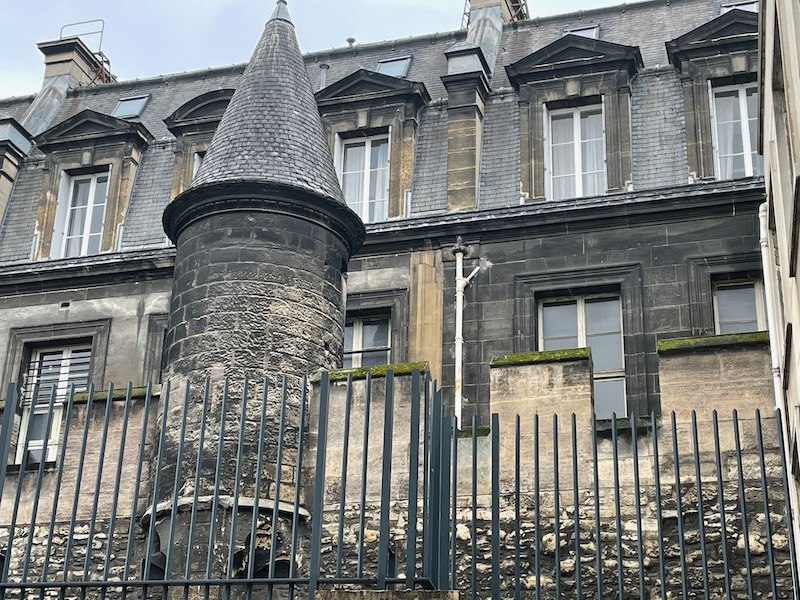
At the corner of rue du Vertbois and rue Saint-Martin, the northwest tower of the enclosure of the former priory Saint-Martin-des-Champs can be seen. The tower was saved from demolition in 1882 thanks to the intervention of the Société des Antiquaires, supported by Victor Hugo. It has been nicely integrated into the newer building attached to it. In the background, and the 2nd picture, shows the Porte Saint-Martin, which was built by Louis XIV in honor of his victories on the Rhine and in Franche-Comté. Built in 1674, it replaced a medieval gate in the city walls built by Charles V.


The Museum of Arts et Metiers, opened in 1802, is housed in the surviving buildings of the former priory Saint-Martin-des-Champs. The priory church, completed in completed in the 13th century, are quite visible. The church was one of the first to start using buttresses (although not yet the "flying" buttresses) and you can see how some of the arches are starting to move from the perfectly-round Romanesque arches to having a tiny bit of the Gothic points. The colored tile roof section is very typical from the Burgundy region.
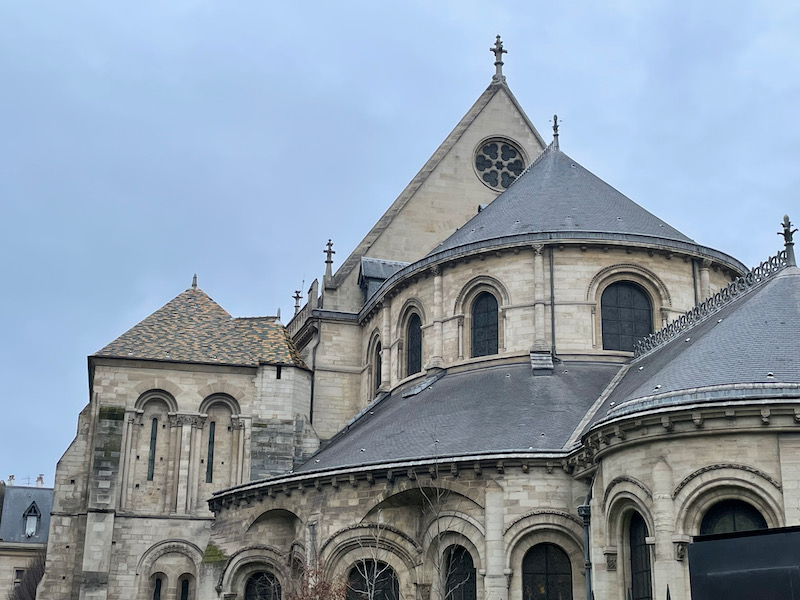
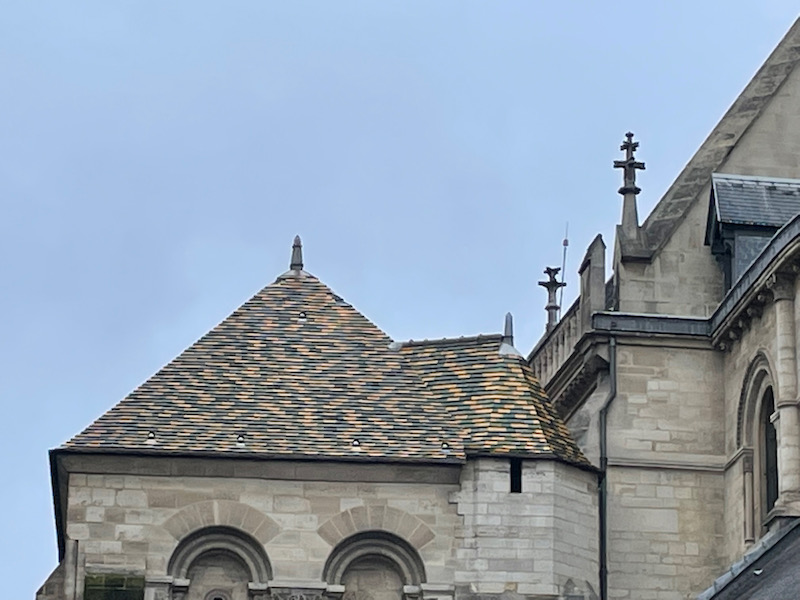
The Fountain of the Innocents, originally called the Fountain of the Nymphs, was constructed between 1547 and 1550 in the new style of the French Renaissance. It is the oldest monumental fountain in Paris. It gets the current name from the Saint Innocents Cemetery, which was here until 1878 when the cemeteries were moved outside the city walls. The fountain was originally up against the wall of the Church of the Saints-Innocents.
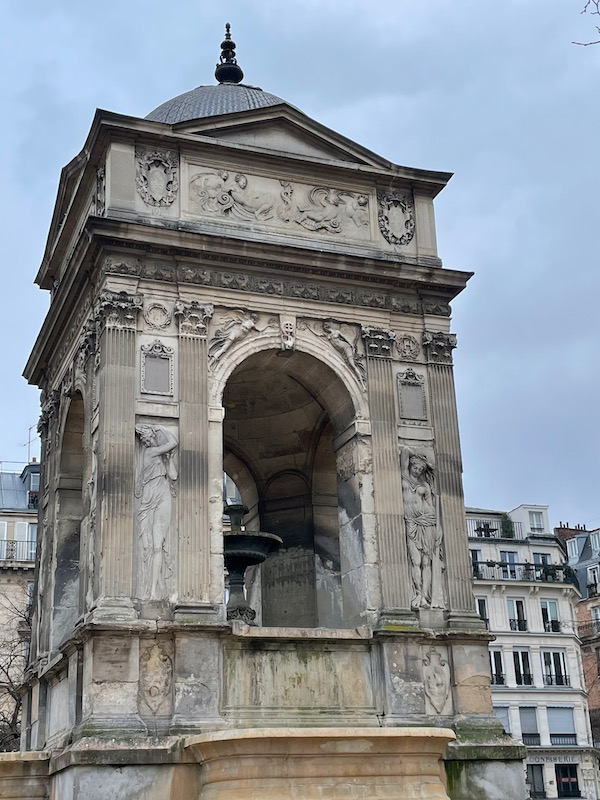
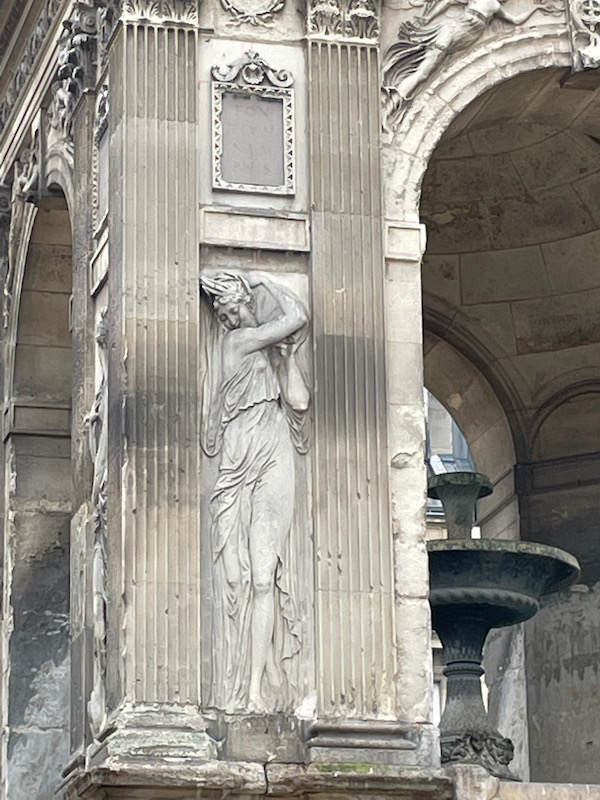

We again walked by the Tour Saint-Jacques, which was the bell tower from the 16th century Church of Saint-Jacques-de-la-Boucherie, which was demolished in 1797. The tower's rich decoration reflects the wealth of its patrons, the wholesale butchers of the nearby Les Halles market. A statue of Blaise Pascal is located at the base of the tower, commemorating the experiments on atmospheric pressure that supposedly took place here.
